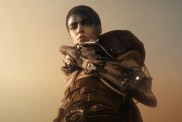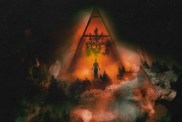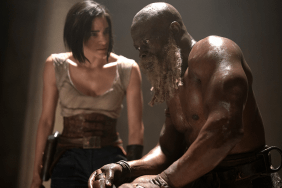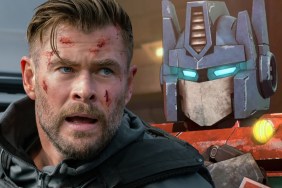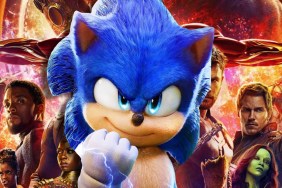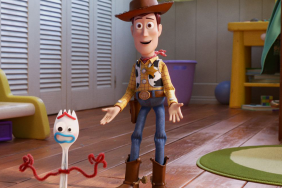Brooks Barnes at the New York Times posted a puff piece yesterday, pretending to explore John Lasseter‘s response to the critical reception to Cars 2. Lasseter gives the pat “I don’t read reviews” response while Barnes seems to believe most of the criticism of Cars 2 had something to do with Pixar’s recent trend of sequel-izing their films and critics simply sharpening their knives, ready to pounce.
While I wasn’t one of the people that disliked Cars 2, I got a different impression from the rash of negativity, and Lasseter opens the door to one particular real issue with not only Cars 2, but all big budget films coming out of Hollywood, in a comment Barnes never even addresses.
In the closing of the piece Lasseter responds to being asked whether the negative reviews hurt him by saying, “I make movies for that little boy who loves the characters so much that he wants to pack his clothes in a Lightning McQueen suitcase.” Now we’re getting somewhere…
In his piece, Barnes quotes the Times‘ very own A.O. Scott and his review of Cars 2, but overlooks what I believe to be Scott’s crucial criticism of the film: “Cars 2 is certainly built to move merchandise — this series may surpass even the Toy Story films as an effective advertisement for licensed playthings.”
To say a film made under the Disney banner was made to move merchandise is not like I’m discovering fire here, but as far as I could tell it was the talk of the Internet when Cars 2 hit theaters back in June, not the fact it was a sequel.
In a June 20, article at the Wall Street Journal, Ethan Smith actually proves Scott’s point writing:
Hollywood studios want to spread their risk by focusing on those films with the potential to generate sequels and spin offs, as well as consumer products, games and theme-park attractions…
Disney says “Cars 2” is on track to sell more tie-in goods than any single previous film, surpassing by a wide margin the current record holder, “Toy Story 3,” which last year sold $2.8 billion of merchandise. That’s on top of the average $2 billion of “Cars” merchandise sold annually since 2006. Both “Cars” and “Toy Story” are products of Disney’s Pixar Animation Studios.
As for green lighting films with merchandising potential, Smith quotes Disney’s Chief Executive Robert Iger saying, “It has been a companywide initiative… Everyone recognizes the value here.”
Smith then turned to Pixar’s president and co-founder, Ed Catmull, who said, “To achieve better than break-even results on its massively expensive productions, Pixar counts on a sizable share of its films to generate merchandise tie-in.”
Cars 2 cost a reported $200 million and as for why it was made, execs at Disney are obviously admitting it had something to do with merchandising but Iger adds, “The decision about making the sequel was very much an extension of the franchise discussion… But it wasn’t mandating a sequel to be made.”
Taking this back to Lasseter, he told Smith, “We only do sequels at Pixar if we’ve come up with a story that’s as good or better than the original.” Couple that with Iger’s “franchise” comment and the idea Lasseter wants to make movies for kids that want to buy Cars merchandise and I think we’re on track for the rest of this particular discussion.
Now don’t get me wrong here, I’m not faulting Lasseter for wanting to make a movie kids love so much they want to slather their room with merchandise and toys. In fact, I think Lasseter is one of the few genuine articles out there in La-La Land and as he explained to our very own Bill Cody, Cars 2 was certainly more than just a chance to market some toys to kids.
However, to ignore the fact Disney has made more than $6 billion on the Cars franchise, making it the second-most successful film merchandising franchise of all time behind Star Wars, would be walking around with blinders on. The mass-merchandising and marketing of today’s films has gotten to a point where many of them are no longer movies, or as A.O. Scott puts it, they are now “effective advertisement[s] for licensed playthings.”
I know what you might be thinking, “So what if the studio makes a little money on the side. That has nothing to do with the movie.” However, to make such a statement is to say you’re not paying attention to what’s on screen, let alone toy shelves.
As a first example, look at Real Steel, a co-production under Disney’s Touchstone banner and DreamWorks. There’s no chance that film gets made, at least not in its current state, without the hope for selling robot toys. The budget has been rumored from $110-150 million and that’s before prints and advertising, which is to say it wasn’t cheap. Of course, product placement from the likes of Dr. Pepper and HP to the inclusion of “New York’s Bing Arena” and “Xbox 720” certainly helped, but what we’re seeing today goes beyond product placement.
The Transformers films enjoy massive budgets and toys help pay for that as was evident by Hasbro’s quarter three conference call in which they detail how their entertainment and licensing division spiked 69 percent to $46.3 million, up from the $27.5 million last year, thanks to Transformers: Dark of the Moon. So if you’re wondering why we’re hearing news that Hasbro’s CEO Brian Goldner is talking about a Transformers 4, wonder no more.
What you should be wondering is how this will continue to effect the kind of films we’re going to end up with as studios continue to look for additional money-making avenues outside of the features themselves. The DVD well is drying up and while Blu-ray is helping sustain, On Demand and streaming options are becoming powerful players in the distribution game, which already has studios scrambling to try and take advantage.
The easy answer to how it will effect things is evident with Real Steel if you ask me.
Real Steel is a piecemeal film. It’s a story with heart in all the “right” places to convince audiences it’s something it’s not. It’s a film made with acceptance, not quality in mind — a dash of this, a sprinkle of that, a little salt here and a little sweetener there. “What, you can’t eat salt? Don’t worry, there isn’t enough to hurt you, but just enough to make the person that does like salt happy.” It’s everything to all people, not too safe, not too edgy, but just right to the point if you think it might be overstepping its boundaries it quickly dials it back to remain in the zone.
I’m not saying there’s something wrong with liking Real Steel, it’s damn near a psychiatric experiment to get you to like it, but to ignore the writing on the wall would be silly.
The most impressive thing about Real Steel, is the fact it managed to make people forget what a terrible person Hugh Jackman’s character was just by having a perfectly timed tear fall from Dakota Goyo’s eye as Jackman is smiling and punching the air like a loon. Now that’s manipulation.
Then there’s the franchising goals, forget the fact Real Steel 2 was being talked about as early as April 2011 (six months before the film was to be released), coming up with the next Star Wars, Harry Potter, Lord of the Rings or Twilight is top priority. Young adult novels are being bought up left and right from the failed attempts with Eragon, I am Number Four and Cirque du Freak, the mediocre results of the Narnia franchise (from two different studios) to upcoming attempts with The Hunger Games, another Percy Jackson and The Mortal Instruments. What will come of these properties?
The risk Warner Bros. took on the Harry Potter franchise is unlikely to ever happen again, though even WB started out safe with the first two installments before handing it over to Alfonso Cuaron who made the film most critics love, many fans dislike, but it’s still the film that undoubtedly marked a turning point in the franchise. I’m convinced that without Cuaron’s Prisoner of Azkaban we never would have had the increasingly adult films we ended up with in the Potter franchise.
Other avenues the studios are exploring come in the form of this past weekend’s two new releases.
Footloose was a carbon copy of the ’84 original and some critics even gave it a pass while fully realizing that. The Thing was a safe remake/prequel/copy of John Carpenter’s film, one that dared not even go so far as to introduce its characters, more interested in getting a CG monster running around than bother with character development.
Paramount was hoping for a Step Up franchise of their own and I’m sure Universal was ready to push the button on Oh, and Another Thing, but after this last weekend we may still see Footloose 2 the Streets, but I’m not expecting another trip to Antarctica.
Speaking of sequels, it’s become increasingly obvious the studio has managed to get audiences looking far into the future, ignoring what’s in front of their face. The current film is no longer enough, even if it isn’t in theaters yet.
I saw a prime example of this in an article at Slashfilm.com yesterday where Germain Lussier discussed the goings on at New York’s Comic Con over the weekend where Marvel President Kevin Feige discussed the upcoming The Avengers film. Lussier writes: “Feige was on hand to promote next summer’s The Avengers. Of course, he was also bombarded with questions about what’s happening after that.”
After that…?
Feige goes on to discuss “Phase Two” of their superhero box-office plans with Iron Man 3 and Avengers 2, films that are 2-4 years in the future. Meanwhile, Entertainment Weekly posts pictures of toys from the Comic Con floor, which in and of itself pretty much describes the state of things.

